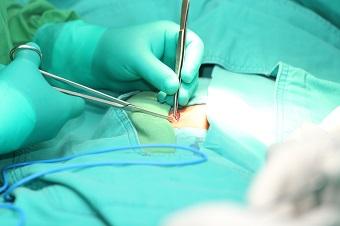Surgical Wounds 101
September 26, 2018
The Centers for Disease Control and Prevention (CDC) estimate approximately 30 million surgical procedures are performed annually in the United States.1 Advances in technology have afforded patients options such as minimally invasive surgery, commonly known as laparoscopic or arthroscopic surgery, which tend to result in much smaller (1cm–2cm) incisions. However, some procedures necessitate larger incisions of varying size, potentially 10cm–20cm or greater, depending on type of procedure, body habitus, and anatomic area involved. These longer incisions create larger surgical wounds with greater potential for chronicity and complications.
Surgical Wound Classification
Surgical wounds are classified by degree of contaminants present. Classification allows for appropriate risk stratification for development of complications and assists with guiding appropriate treatment. The risk for complications is based on several factors, including mechanism of injury, level of contamination, organ system involvement, and patient’s condition before surgical intervention.
Class I/Clean
This class describes an uninfected operative wound in which no inflammation is encountered and the respiratory, alimentary, genital, or uninfected urinary tract is not entered. Operative incisional wounds that follow nonpenetrating (blunt) trauma should be included in this category if they meet the criteria. Example: abdominal incision from primary closure of exploratory surgery for repair of splenic laceration following blunt trauma.2
Class II/Clean-Contaminated
This class describes an operative wound in which the respiratory, alimentary, genital, or urinary tract is entered under controlled conditions and without unusual contamination. Specifically, operations involving the biliary tract, appendix, vagina, and oropharynx are included in this category, provided no evidence of infection or major break in sterile technique is encountered. Example: tonsillectomy.2
Class III/Contaminated
This class contains open, fresh, accidental wounds, as well as operations with major breaks in sterile technique (e.g., open cardiac massage) or gross spillage from the gastrointestinal tract, and incisions in which acute, non-purulent inflammation is encountered. Open traumatic wounds that are more than 12–24 hours old also fall into this category. Example: hemorrhoidectomy.2
Class IV/Dirty-Infected
This class describes an incision created during an operation in which the viscera are perforated or when acute inflammation with pus is encountered during the operation (e.g., emergency surgery for peritonitis from gross fecal contamination), as well as delayed presentation of traumatic wounds with existing contamination and devitalized tissue. This definition suggests that the organisms causing post-operative infection were present in the operative field before the operation. Example: chronic wound debridement.2
Risk Factors for Surgical Wound Complications
The CDC classification system is used for surgical wound documentation and involves the patient’s risk for infection and complications. Risk factors are directly related to increased development of complications such as surgical site infection (SSI), increased length of stay, increased cost of care, morbidity and mortality, decreased quality of life, and additional complications of prolonged hospitalizations, including those from immobility such as skin breakdown, respiratory compromise or atelectasis, vascular sequelae such as deep vein thrombosis, among others.3 Any condition that decreases effectiveness of host defenses is a risk factor for developing surgical wound complications. The following list includes conditions that are known to affect surgical wound complication rate1, 3, 4:
- Immunocompromised state: diabetes; autoimmune disease such as rheumatoid arthritis or lupus; cancer; long-term corticosteroid therapy; or any patient receiving chemotherapeutic agents or medications that dampen immune response
- Altered states of perfusion: chronic respiratory conditions such as chronic obstructive pulmonary disease, vascular disorders including peripheral vascular disease, hypertension or hypotension, coagulopathy, smoking
- Functional status: dependent status, generalized debility or immobility predisposing the patient to skin breakdown, affecting self-care capacity, including ability to obtain adequate nutrients
- Advanced surgical wound classification
- Malnutrition
- Radiation therapy
- Unintentional weight loss
- Female sex
- Obesity
- Longer duration of surgical procedure (greater than two hours)
- Emergency procedure
- Pre-operative sepsis
Assessment and Care Planning
Identification of the factors contributing to development of surgical wound complications and implementation of evidence-based strategies to augment these factors are requisite for optimal patient management. Construction of pre-operative and post-operative care plans can reduce risk of complications, including SSI, failure to heal, wound dehiscence, among others. This plan may include smoking cessation, review of functional status and activity levels, education regarding glycemic control if applicable, nutritional screening, and body mass index and obesity assessment. Interdisciplinary involvement is beneficial in reducing complications through patient education and counseling. Participation by nursing staff, family medicine physicians or internists, diabetes educators, wound care clinicians, pharmacists, infectious disease specialists, among others, can all positively contribute to management of risk factors.6
References
1. Centers for Disease Control and Prevention (CDC). Surgical site infection (SSI) event: procedure-associated module. 2016. https://www.cdc.gov/nhsn/pdfs/pscmanual/9pscssicurrent.pdf. Accessed September 11, 2018.
2. Canadian Agency for Drugs and Technologies in Health. Antibacterial sutures for wound closure after surgery: a review of clinical and cost-effectiveness and guidelines for use [Internet]. 2014. Table A4, surgical wound classification. https://www.ncbi.nlm.nih.gov/books/NBK263230/table/T5/. Accessed September 11, 2018.
3. Bryant RA, Nix DP . Acute & Chronic Wounds: Current Management Concepts. 5th ed. St. Louis, MO: Elsevier; 2016.
4. Wiseman JT, Fernandez-Taylor S, Barnes M, et al. Predictors of surgical site infection after hospital discharge in patients undergoing major vascular surgery. J Vasc Surg. 2015;62(4):1023–31.
5. Li X, Nylander W, Smith T, Han S, Gunnar W. Risk factors and predictive model development of thirty-day post-operative surgical site infection in the Veterans Administration surgical population. Surg Infect(Larchmt). 2018;19(3):278–85.
6 . Harris CL, Kuhnke J, Haley J, et al. Best practice recommendations for the prevention and management of surgical wound complications. Wounds Canada. https://www.woundscanada.ca/docman/public/health-care-professional/bpr-…. Accessed September 11, 2018.
The views and opinions expressed in this blog are solely those of the author, and do not represent the views of WoundSource, HMP Global, its affiliates, or subsidiary companies.












Follow WoundSource
Tweets by WoundSource